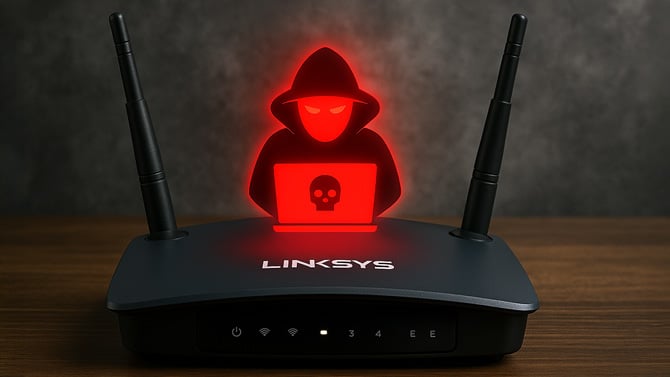The FBI is warning consumers that aging Linksys routers – many of which are no longer supported with firmware or security updates – are being actively exploited by cybercriminal groups to build proxy networks and launch attacks. According to a FLASH bulletin issued by the Bureau on May 7, 2025, the malware-backed services known as 5Socks and Anyproxy are targeting end-of-life (EOL) routers to install persistent malware and resell access to the compromised devices.
These cybercriminals are leveraging known vulnerabilities in outdated routers with remote administration enabled to gain root access. Once compromised, the routers are co-opted into botnets that are then rented out as proxy services, giving criminals a way to hide their identities and traffic. These proxy services can be used to carry out further attacks or conduct illicit activities under the guise of a legitimate residential IP address.

The list of vulnerable models includes a range of older Linksys routers:
- E100
- E300
- E1000
- E1200
- E2500
- E3200
- E4200
- M10
- WRT310N
- WRT320N
- WRT610N
Many of these routers were released more than a decade ago and have not received updates in years.
Read more: TP-Link’s Wi-Fi 7 Mesh System Hits Lowest Price Since Black Friday
The malware used in these attacks establishes persistent access to the device, with communication between infected routers and command-and-control servers taking place as frequently as every 60 seconds. According to the FBI, the malware can bypass authentication and install files that transform the router into a proxy node in the attackers’ network.
And here’s the problem: unless you’re technically savvy and actively monitoring your router’s firmware, there’s a good chance you wouldn’t know you’ve been compromised. Most consumer antivirus tools won’t scan routers, and the malware is specifically designed to operate in the background.
As someone who writes regularly about home networking and security, I can’t stress this enough: if you're using a router that’s no longer receiving security updates, the safest and most practical option is to replace it.
For most households, I recommend upgrading to a mesh WiFi system, which will not only provide better whole-home coverage but also extend the life of your network investment through continued updates and security protections. The eero Pro 6E is my go-to pick and what I use for my own home network – it’s fast, simple to set up, and automatically handles software updates in the background.
Read more: FBI Busts Nigerian Sextortion Ring Behind Teen Suicides
If you’re not ready to replace your router today, the FBI advises that disabling remote administration features and rebooting the device can help mitigate the risk. Though this is only a short-term fix. Ultimately, your network is only as secure as its most vulnerable device.
[Image credit: DALL-E]
















